What do sufferers of schizophrenia experience, and why? Might the immune system be to blame? And could an avatar be the answer to treatment? This week we delve deep into the brain circuitry behind this psychiatric condition to uncover the causes, hear what drugs like ketamine can reveal about hallucinations and how a cartoon representation of the voices plaguing patients can block the symptoms. Plus, chemically induced pluripotent stem cells, a gene that leads carriers into snacking temptation and why babies can tolerate extended periods upside down inside their mothers...?
In this episode

01:22 - Seconds of 'fat gene' keeps you hungry
Seconds of 'fat gene' keeps you hungry
Genes have a significant effect on how much and what types of food we eat, new research has revealed.
We know that possessing certain forms of a gene known as FTO (the 'fat mass and obesity-associated gene') predisposes carriers to weight gain. People who have two copies of the high-risk 'A' form of the gene are 1.7 times more likely to become obese  than those who carry two copies of the low-risk 'T' form - why this happens wasn't known.
than those who carry two copies of the low-risk 'T' form - why this happens wasn't known.
Now, a new study from a UCL-based team led by Rachel Batterham, has shed light on how this gene promotes weight gain.
FTO gene, they have discovered, interacts directly with a hunger hormone called ghrelin. This is produced by the gut when it becomes empty. Levels of ghrelin in individuals with two copies of the T form of the FTO gene - referred to as TT -plummet after eating, letting the brain and body know that it has been fed. But, individuals with two copies of the A form of the gene - known as AA - experience a fall in ghrelin that is only around half as big. Consequently, AA individuals tend not to feel as satisfied by a meal as TT individuals, which might encourage them to continue eating for longer, or to become tempted to snack soon after.
The UCL team made the discovery by using an MRI scanner to compare the brain activity of AA and TT individuals, both when they had fasted overnight and when they had just eaten. Whilst in the scanner, the subjects were shown pictures of both high and low calorie foods, as well as non-food "control" items.
The results were striking - the responses to food images were dramatically different between the two groups. In the fasted state, both groups responded differently to food images over non-food items. When fed, the TT group showed significant brain activity in response to high-calorie foods, but little response to low-calorie foods; this phenomenon is known as the 'dessert effect'. In contrast, the AA group showed a high response to both high and low calorie foods, particularly in areas of the brain associated with food reward. Broadly, this means that AA individuals might be less picky about what they eat after a meal than TT carriers, and so might be tempted to eat more.
Batterham's group then looked at what effect ghrelin levels themselves had on brain response to the images. In the fed state, as ghrelin levels decreased, members of the TT group had a decreased response to food. But the complete opposite was observed in AA individuals who, as ghrelin levels decreased, showed an increase in brain activity in incentive-related brain areas, particularly in response to high calorie foods.
These findings suggest that there is an intrinsic difference in the way that the brains of AA and TT individuals respond to food. This difference in perception of food and hunger might cause carriers of the A form of the FTO gene to overeat and gain weight in a way that carriers of the T form do not.
Although this is by no means a complete answer, this study brings us one step closer to understanding the causes of obesity and how it might be targeted in the future.
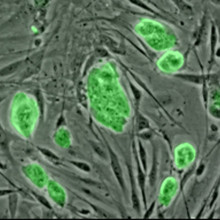
05:27 - Reprogramming stem cells, chemically
Reprogramming stem cells, chemically
A magic cocktail of seven key chemicals can reprogramme adult cells to turn them into stem cells capable of producing any tissue in the body, 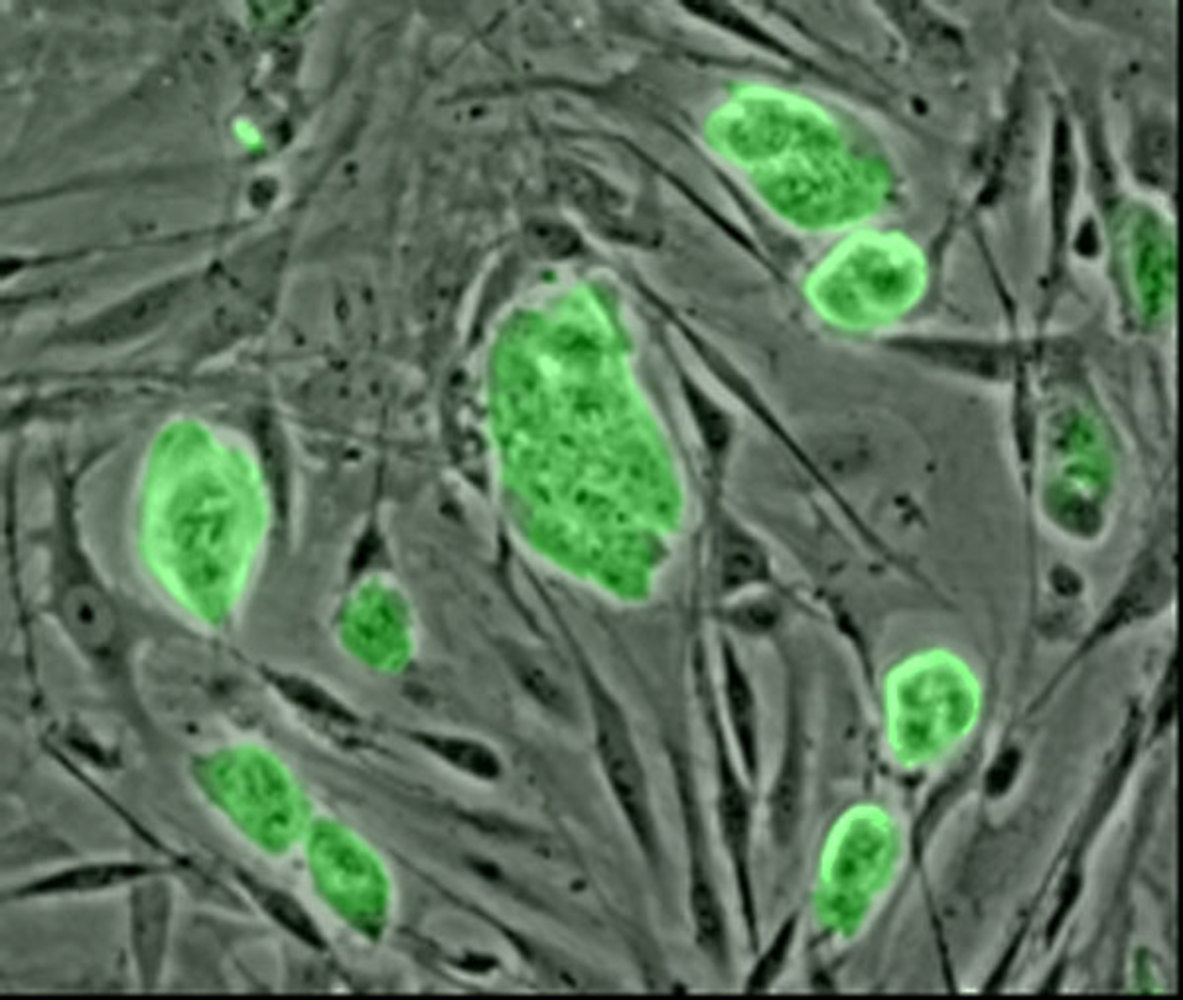 a new study has shown.
a new study has shown.
In recent years, scientists have shown that specialised - so called "differentiated" - adult cells can be turned back into unspecialised stem cells by activating a handful of key genes that appear to control cell behaviour.
But the only way to do this was to use agents such as viruses to carry copies of these genes into the cells, running the risk of destabilising the DNA and potentially triggering cancer-causing changes or mutations.
Now, writing in Science, a group of researchers at Peking University in Beijing, led by Hongkui Deng, have discovered a mixture of seven simple chemicals that can do the same jobs as the previously-identified gene combo, turning adult cells into so-called pluripotential stem cells, indistinguishable biochemically, genetically and behaviourally from the earliest stem cells produced in an embryo.
The team made the breakthrough by laboriously testing thousands of small molecules on dish-grown cultures of cells. The cells had been modified so that when the correct "reprogramming" genes were all activated, the cells glowed green, showing the scientists had been successful.
They eventually identified a magic combination containing 7 molecules that turned a small fraction of mouse skin cells, known as fibroblasts, into cells they are dubbing ciPSCs or "chemically induced pluripotent stem cells."
Down a microscope these cells resembled embryonic stem cells. Injected into a developing mouse embryo, the cells gave rise to parts of all of the different tissues found in an adult mouse, proving they were genuinely "pluripotent". Moreover, the resulting adult mice remained healthy for at least 6 months.
The efficiency of the reprogramming process is, admittedly, very low, with just 0.2% of treated cells successfully re-programming to be stem cells.
Nevertheless, this is no lower than the rates achieved using existing genetic techniques, and now the researchers are beginning to explore further to discover exactly how their chemical cocktail works in order to improve the efficiency of the process and, presumably, whether this same cocktail can work on human cells too...

09:02 - Quick Fire Science - Human Flight
Quick Fire Science - Human Flight
This week, a team at Toronto university won the "Igor I. Sikorsky Competition" by building a man-powered helicopter and flying their machine "Atlas" within a 10mx10m box, at a height of 3m for over a minute.
Here's the Quickfire Science on the history of man-powered flight with Claudia Efstathiou and Priya Crosby
- Leonardo da Vinci drew a blue print for a man-powered helicopter in the 15th century, driven by men running round in a circle although it was never built.
- Bikes are a running theme though all subsequent attempts at man powered flight, because the are one of the most efficient methods of transport.
- A lot of energy is needed to lift aircraft off the ground and using the strong muscles in our legs is the best way generate this power.
- In 1923 W. Fredrick Gerhardt from Ohio flew his "cycle plane" at an altitude of 2 feet for just over 6 meters. Gerhardt's machine had 7 wings stacked on top of each other and was 15 feet tall.
- In 1959 British industrialist Henry Kremer offered a £5,000 prize for the first human powered aircraft that could complete a figure of 8 course over a mile.
- Kremer later increased the prize money to £50,000 and opened the competition to applicants from overseas; previously it had only allowed British entries.
- The prize was finally won in 1977 by American engineer Dr. Paul MacCready with a machine named "Gossamer Condor". The design was based on hang gliders, with a bike unit suspended in the middle.
- MacCready also designed the first man powered plane to cross the English Channel. On the 12th June 1979 the Gossamer Albatross successfully made the 22.2 mile trip in 2 hours and 49 mins.
- Man powered planes are easier to build than man powered helicopters because you can increase their efficiency by lengthening the wing. This is more difficult on a helicopter because the blades have to move.
- The man-powered helicopter which managed to fly for over a minute this week has four blades each with a radius of over 10 meters, that's roughly the length of three mini coopers.
- The whole helicopter is over 49 meters wide but despite having such a large structure, the team used super-light materials such as carbon fibre tubes and expanded polystyrene foam to ensure the final helicopter weighed only 55kg.
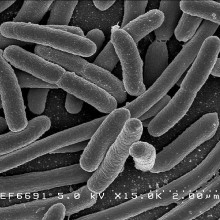
11:53 - Gut bugs and diet affect how drugs work
Gut bugs and diet affect how drugs work
Intestinal bacteria with a taste for certain drugs can dramatically affect how some people respond to different medicines, new research 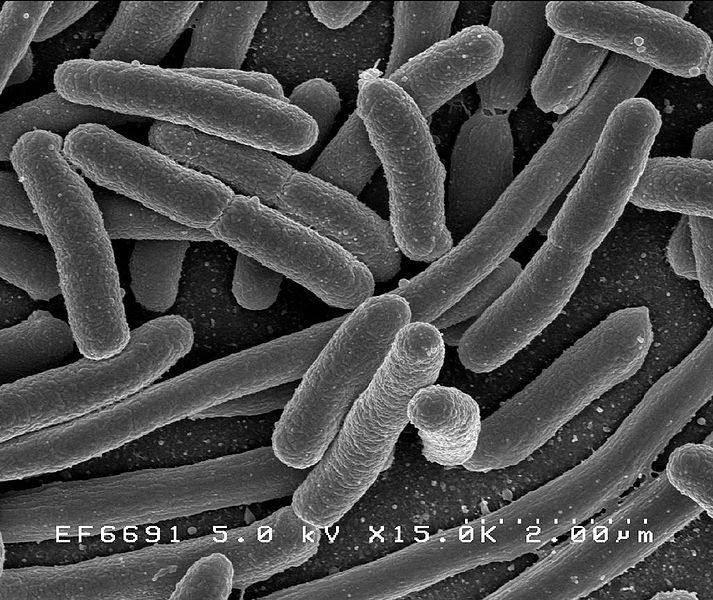 has shown.
has shown.
Using the cardiac agent digoxin as a proof of concept, Harvard scientist Henry Haiser and his colleagues have found that a common bowel bug, called Eggerthella lenta, breaks down the drug, but only when levels of dietary protein are low.
This means that the levels of drugs getting into a patient's bloodstream could be strongly influenced by what bugs they carry and how these microbes respond to what the person eats.
In the current study, mice colonised with the Eggerthella bacterium had blood levels of digoxin that were twice as high when they were fed a high-protein diet compared with low-protein chow.
Dietary protein, and specifically the amino acid arginine, had the effect of turning off a subset of digoxin-metabolising genes in the microbes, the team found.
On the other hand, a diet low in protein, and hence arginine, led to the activation of this same group of genes and the ensuing deactivation of the digoxin within the intestine before it could be absorbed, resulting in low blood levels of the drug.
This shows, the scientists say in a paper in Science this week, that "a comprehensive view of pharmacology includes the structure and activity of our resident microbial communities and deeper understanding of their of their interactions with each other, with their host habitat and the nutritional milieu."
The next step, they suggest, will be use genetic techniques to examine the behaviours of the microbes in the guts of cardiac patients to see whether this can be used to guide more effective dosage regimes.

14:34 - Are Memories just for Humans?
Are Memories just for Humans?
Hannah - So, I've got a paper that's been published this month, all about episodic memory. So, my first episodic memory was, when I was 3, my big sister shoved a  dried pea at my nose, so mum and dad had to race me to a hospital. I think I'm clearly remembering sitting in the doctor's chair and having this scalpel, this tool being used to try and tweak this dried pea out of my nose.
dried pea at my nose, so mum and dad had to race me to a hospital. I think I'm clearly remembering sitting in the doctor's chair and having this scalpel, this tool being used to try and tweak this dried pea out of my nose.
Chris - Did it make it into your brain?
Hannah - It didn't make it into my brain, but it was pretty far up. So, since this first early memory of mine, I have associated tweezers and scalpels and peas, and surgery, and healing people, and I've also had a great fondness for mushy peas. So, this is apparently something called 'episodic memory'. So, where, when and why, and it's always been thought previously that it's only humans that can exhibit such longer term episodic memory. So, scientists publishing in the journal of Currently Biology has a published a quite long term study, looking at over 3 years, how chimpanzees and orang-utans can remember distant past events.
Chris - I bet they didn't put peas up their noses though.
Hannah - They didn't push peas at their noses, no. Instead what they did was they took the orang-utans and the chimpanzees and they put them in kind of almost like a first floor flat with different rooms in it and they went and hid different boxes that contained different tools, and tempting them on a shelf, very high up was their favourite kind of food - a nice banana. The chimpanzees and the orang-utans couldn't reach this banana unless they got the tool from a hidden box within one of these rooms in the flat and then use that as a reach in order to yank down the banana. So, the researcher took the primates into the room and showed them the boxes once. They remembered which box they had to open in order to get the right tool, in order to yank down the banana, in order to get their reward. And then the researcher, 3 years later, took them back into the room. They had actually been in this room since, but not with this particular task and within 5 seconds, the primates quickly found the right box and did the same trick and got their banana, and went, "Yum, yum, yum! That's nice."
Chris - These are quite long-lived creatures, aren't they? And we have good lifelong memories. If it is their favourite treat, it would've made a big impression on them, being able to retrieve it, so I'm not actually that surprised that they would remember that.
Hannah - Yes. Scientists have long thought that this type of long term episodic memory is what makes us humans unique, but there's a lot of evidence that now seems to be flooding in that's forcing scientists to re-evaluate this. So for example, Nicola Clayton who works here at Cambridge at the Department of Psychology has been working with the scrub jay. So, a type of corvid, a bird and she's found that over a period of days, they can do similar tasks as well. She hasn't looked at longer periods, but it seems as though other types of species do have this longish term episodic memory as well. So, it's really quashing some scientist view of what it is to be human.
Chris - Oh dear! But not too much, "Oh dear!" We're all one big happy animal family. You can find out more information including the references to the papers that Hannah and I have been discussing on our website that's at thenakedscientists.com/news.
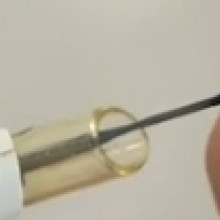
17:51 - Intelligent knife sniffs out cancers
Intelligent knife sniffs out cancers
with Zoltan Takats, Imperial College London
 A new intelligent surgical device that can chemically analyse the tissue it's cutting through to distinguish between healthy and cancerous cells have been unveiled by scientists at Imperial College, London. Chris Smith spoke to co-inventor, Zoltan Takats to find out how the "iKnife" works...
A new intelligent surgical device that can chemically analyse the tissue it's cutting through to distinguish between healthy and cancerous cells have been unveiled by scientists at Imperial College, London. Chris Smith spoke to co-inventor, Zoltan Takats to find out how the "iKnife" works...
Zoltan - It is actually a hybrid instrument. It is a combination of a surgical dissection devices which is actually a quite old surgical device called electrosurgery. It's been used since 1925 I believe. So, it's a combination of electrosurgery with an analytical device called mass spectrometry. We are taking the surgical dissection tool and using the by-product of the surgical dissection tool to identify what kind of tissue the surgical dissection tool is cutting through.
Chris - When one does electrosurgery, effectively, you're using an electric current. It generates little spark at the tissue interface and that vaporises the tissue. Having done this, I can testify to the smell that comes off. There is a lot of smoke. You're presumably drawing off some of that smoke and then feeding it into your mass spectrometer to sniff the smoke and see what's in it.
Zoltan - Exactly. Electrosurgical device produces this smoke. This aerosol and we realise that this smoke doesn't only contain the tissue debris and the things like that, but it also contains ionised molecules. So molecules that are actually charged and without doing too much to this aerosol, we can introduce it into a mass spectrometer and analyse the charged molecules, and get a chemical fingerprint of the tissue which is being dissected.
Chris - In other words, when you blast apart the cells with the electrical cutting tool, effectively, you're also releasing as a vapour, all of the chemicals in those cells, and I suppose the premise here is, if a cancer cell has a different biochemical milieu going on inside it compared with a non-cancer cell, can you tell them apart?
Zoltan - So, the cancer cells have a markedly different chemical signature and that's what we use to identify them.
Chris - What sort of resolution and how would this be useful for a surgeon?
Zoltan - Resolution wise, it always depends on the hand of the surgeons. If you look at the instrument or resolution that we can actually look at micrograms of tissue in using this method Of course, surgeons cannot really work with micrometre precision. I would say, you're using a handheld device, maximum resolution is somewhere around a millimetre but it clearly depends on who is holding this device.
Chris - So, would one apply this in a sense that a surgeon has operated on a cancer, the surgeon thinks that he or she has got all of the tumour out, but by running the device around the margin of the tumour, and sniffing that smoke that's coming off, this will tell if there's still residual cancer tissue there or if they're into healthy tissue?
Zoltan - One thing is when a surgeon is cutting around the tumour and he or she assumes that all the dissection line is healthy tissue, the device would cut through tumour or cancer environment, so something which is not cancer but really close to the tumour, then the device can give warning signal, the identification result on the screen. We have actually a very simple colour coding with cancer in red and tell the surgeon that maybe you want to remove a little bit more tissue here because you are getting too close to the tumour. But if it's a wrong type of application, another type of application that would be the identification of unknowns, fairly often it happens that there are such tissues, unidentified tissue features around the tumour and that it's really hard to tell just by the naked eye whether these are proxima metastases of the tumour or these are just something else. In these cases, it is very important thing to do is decide because if it is a metastatic disease then there is not too much hope for a curative intervention. If it's not metastasised yet then there's a good chance to cure the disease. At that point, when the patient is opened up, then surgeons can see what's around and has to make a decision which way to go. But in our case, one can just zap a little bit of the suspicious tissue, a hardly visible amount and get an answer immediately.
Chris - Now, when one does a resection, the pieces of whatever has been taken away go off to the histopathology laboratory and a pathologist looks down a microscope to see if they can see where the unhealthy tissue stops and a healthy tissue starts to gauge this so-called resection margin. Could the histopathologist, instead of relying on his or her eye on a microscope, could they use your tool to ask, does this thing have clear margins? Where does the tissue become unhealthy again?
Zoltan - Actually, you've pointed out the very important feature here. This intelligent surgical device is a part of a much bigger story and this much bigger story is about paradigm change in histopathology. What we are proposing here and not only me, but also a number of other groups all around the planet is to change the basic definitions of tissues from a morphological basis to a chemical basis. In that sense, histopathologists can use not surgical device, but can use similar tools with higher space or resolution which we generally call imaging mass spectrometry for the
identification of tissues in surgical sections. But that's again in the area which we've been heavily working on, but that's a little bit different from the current study.

24:30 - Ketamine and schizophrenia
Ketamine and schizophrenia
with Paul Fletcher, University of Cambridge
Worldwide, about 1% of people are affected by schizophrenia. Paul Fletcher, from the Department of Psychiatry at Cambridge University, studies the condition and why agents like ketamine can reproduce some of the symptoms. He spoke with Hannah Critchlow.
Hannah - So Paul, the experiences that Louise just explained, are they typical for people that have Schizophrenia?
Paul - Well, one might argue that there's no absolutely typical set of symptoms, but as far as it goes, really what Louise is describing, hearing the voices, feeling very persecuted, could be considered as typical of Schizophrenia. Schizophrenia itself is a very broad description of a serious mental disorder. It means a splitting of the mind, which is not as some people have thought, a splitting of the personality, the sort of Jekyll and Hyde. It really refers to fragmentation of mental processes so that somebody has a great deal of difficulty in interacting cohesively with the world. Typically, the symptoms are divided into three broad types and a lot of what Louise was describing would be the first of these, so-called psychosis which refers to being, if you like, 'out of contact' with objective reality. So, somebody might experience often terrifying beliefs about being controlled or persecuted, just as Louise described. Those beliefs are called delusions. People may also experience what are called hallucinations, which are the perception of events or objects that are not objectively there. Now, Louise was describing them as hearing voices, but people also experience in touch by things or sometimes seeing things that aren't there, but she also describe something that probably falls into another category within the symptoms of Schizophrenia which is the sort of cognitive problems that people have feeling of being fragmented and also having difficulties with things like their attention and their memory, difficulty making sense of the world. And then there's a third group of symptoms which we often referred to as the negative symptoms which refer to difficulties in motivation and action, a tendency to disengage from the world personally, emotionally, socially, and physically.
Hannah - And do we know what's going on in the brain to give rise to this vast myriad of symptoms that are associated with Schizophrenia then?
Paul - No, we don't know the cause of Schizophrenia. It really is a broad term for what may well be a group of sub-syndromes which have a sort of common presentations such as hallucinations, but may actually have underlying different causes.
Hannah - And one avenue for researching the brain basis for Schizophrenia is to use drugs that alter perception of reality. I believe this is what you're studying here in Cambridge. Could you tell us a little bit about that?
Paul - Sure. I mean, the idea of a drug model of an illness like that is not so much that you're trying to create that illness in a healthy person who wouldn't otherwise have it. What you're trying to do is make a very specific manipulation of their brain chemistry, temporarily of course, in order to
produce some of the perceptual changes that are like those in the illness. So, in that sense, what you've got is a very highly controlled experimental situation in which you can induce things like hallucinations in healthy people and observe how their brain changes, things like that.
Hannah - And what kind of chemicals are you using to induce these changes?
Paul - Well, a number of different drugs have been used in the past to model Schizophrenia, from amphetamines to LSD. The drug that I've been very interested in is one that acts on a particular type of receptor in the brain called the NMDA receptor and that drug is ketamine.
Hannah - What kind of thing happens to people when ketamine is administered?
Paul - Well initially, people experience perceptual disturbances. Things can seem quite vivid. Things can seem strangely meaningful. So, for example, a coffee cup that's sitting on a table might somehow seem to be much more significant to them at that time. So, people describe those phenomenon - those are very similar to what a number of people describe in early Schizophrenia - this sense of changing importance of things.
Hannah - And I think you've got an audio example of how we can change, we can tweak our perception.
Paul - Most of us feel that we experience the world as passively receiving our sensory input, but actually, if we did that, we would be dysfunctional because there is so much sensory input. So much of it is noisy. So much of it is ambiguous that we can't actually do anything, unless our mind essentially takes some shortcuts.
Hannah - So, our brain is constantly being bombarded by all these information coming in through all our senses and we have to make assumptions and predictions based on our prior experiences.
Paul - That's exactly right and this is what I study under ketamine. So, an example of that would be in hearing. We have a sense that we hear words very clearly, but actually, a lot of the time, we're superimposing what we think should be there onto it. So, we've got an example here which is from Matt Davis's group in Cambridge.
(Sound)
Paul - So that, to most people hearing it for the first time is rather like ugly clockwork bird song. However, if you change their experience slightly by playing another clip now...
Audio - The camel is kept in a cage at the zoo.
Paul - What they now have is a different prior experience. So now, if they hear the first clip again, they should have a changed experience of it.
(Sound)
Paul - So, they should now be able to understand that.
Hannah - The cadence seems quite similar from the first noisy track where I didn't hear that sentence before.
Paul - Yeah, it's exactly the same track. What that tells you is that your prior experience is superimposing itself onto a highly noisy stimulus in order to make sense of that and that's great. That's what we should be doing all the time, but of course, what it also means is that your brain is creating a world. And if you're creating sensations and perceptions, what you're essentially doing under normal circumstances is hallucinating. Its balance is maintained in a very useful way in a healthy individual, but if it's shifted, then it may well be that you hallucinate in a very non-useful way. In a way, that Louise described, experiencing very unpleasant voices telling you what to do and controlling you.
32:58 - Cartoon avatars stop schizophrenia
Cartoon avatars stop schizophrenia
with Julian Leff, Institute of Psychiatry
Schizophrenia is normally treated with medicines such as antipsychotics in combination with talking therapies like cognitive behavioural therapy. But now Institute of Psychiatry, London, researcher Julian Leff has discovered that asking patients to create a cartoon representation, or avatar, of the voices they hear can enable them to regain control over the condition and in some cases achieve freedom from these hallucinations altogether, as he explained to Chris Smith...![]()
Chris - Tell us about your strategy; which involves cartoon avatars on computers.
Julian - Well, we know that most patients who hear these voices like Louise find it very difficult to confront them. Partly because the voices are quite vicious and they will say, "If you start talking to me, I will harm you or your family." It's very frightening and so, they recede into the background and don't tackle them. But it turns out that a few people who are able to start a dialogue with the voices will overcome that fear, actually feel much more in control. And so, that was the start point for my work, trying to enable the patient to actually create a dialogue with this invisible entity. No one can see it, not even the patient, but they do have some idea of who it is. So, with my colleagues, two speech scientists that Geoffrey Williams and Mark Huckvale, we developed a computerised programme that enables a patient to choose the face that they thought belong to the person talking to them and also, the voice which was actually my voice as a therapist morphed into variety of forms and they chose the one that was closest to the voice they heard and then that was all put together in a programme so that you had the face, and the voice, and the lips of the face were synchronised with the voice.
Chris - And you would go and hide somewhere else so that you could communicate with them as though you were that avatar on that screen they were seeing.
Julian - That's right, yes. The patient will be in one room looking at a monitor on which their avatar appeared, the avatar they've created. I'd be in another room, which they couldn't see it and didn't know I was there, and I could speak in two different ways. I could speak through the avatar with my morphed voice and be the horrible persecutory avatar and then I could switch in a second to being the therapist speaking in my own voice by just having a click on a screen, one way or the other. So, I would say to the patient for example, "You're horrible. You don't deserve to live. Punch yourself in the face." And then immediately, I would switch to my own voice and say, "Don't listen to the avatar. It's horrible. It's telling you lies. You've got to tell the avatar to go away and leave you alone."
Chris - Did they believe you? Did they engage with this avatar?
Julian - Out of the 16 patients who receive this therapy, only 2 didn't respond to the avatar, as though it was a real representation of the voice they heard. Only 6 sessions were given to each patient. Out of the 16, 14 of them accepted that this was the voice that they heard outside of the experimental session.
Chris - How do you evolve what the voice says to the patient over the course of the 6 sessions? You presumably don't persecute them all the way through the treatment course.
Julian - No, not at all. The idea was first of all, to give the patients a sense that they could overcome the avatar and also, the avatar changes over the course of the 6 sessions from being persecutory and horrible and vicious to actually becoming friendly and offering to help the patient. So, there's a real sea change in the avatar's persona and at the same time, the avatar agrees not to torment the patient anymore and to leave the patient in peace.
Chris - Does it work?
Julian - That's the extraordinary thing. I was quite surprised by how well it did work. They were able to stand up to the voices, as opposed to the avatar when they're out in the real world. Furthermore, they were able to feel that they were controlling the avatar. One patient said to me, "They've stopped talking to me because they know I will answer them back."
Chris - So, it does appear that it sort of hands control to the patient without ever having to dissuade them that the voices they hear aren't real because that's the big thing that I think Louise displays, that she remains absolutely convinced that these are sounds coming from outside her head that are a third party.
Julian - You're absolutely right about that and one of the issues in this is that I'd take what the patient say at face value. I don't say, "No. This is nonsense. This is your imagination." I say, "Yes, you are hearing these voices. Now, I can hear them. Because you've created the avatar, I can both hear and see the person who's persecuting you." And that validates the patient's experience so they no longer feel freakish. I'm sharing their experience with them.
Chris - What fraction of the 16 patients got some degree of improvement through doing this?
Julian - Virtually, all of them. Not the 2 who didn't recognise that the avatar was the voice. They didn't have any success at all, but the other 14 improved in various ways. There were highly significant reductions in what they perceived as the frequency and intensity of the voices and there was also a significant decrease in the persecutory nature of the voice, the fact that it was malevolent, dropped very considerably. Three of the patients to my utter astonishment stopped hearing the voice altogether.
Chris - Is there any possibility that this could represent a subgroup of people with Schizophrenia? Were they a certain select group of individuals who had a certain manifestation of the disorder or do you think this treatment could generalise to people with Schizophrenia at large and be a very effective, very cheap way to intervene?
Julian - All the patients that I admitted to my trial had to have had voices for at least 6 months that had not responded to the adequate doses of medication. In fact, all the patients but 2 were still on their medication. The 3 people who lost the voice, one had been hearing the voices for 16 years, another one for 13 years, and another for 3 ½ years. All of them lost the voice during the course of the therapy, and 3 months after the therapy had been completed the voices were still absent. But there were other patients in the trial who couldn't tolerate the experimental situation. They couldn't bear to hear the avatar saying these horrible things to them and they dropped out and others couldn't concentrate on the avatar because they were hearing multiple voices that were talking very loudly over the avatar. So, it clearly will not work for everybody. It works best for people who hear one dominant voice. If there were 2 or 3 voices, I ask the patient, "Which one would you most like to be rid of?" And then we concentrate on that one voice. As we did with Louise, I mean, she was hearing voices from all over the place. But nevertheless, concentrating on one voice and getting her to feel in control of that one voice actually generalised to her, not hearing those voices anymore.
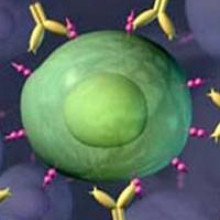
40:37 - Can antibodies cause schizophrenia?
Can antibodies cause schizophrenia?
with Belinda Lennox, University of Oxford
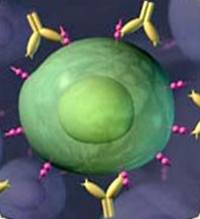 Could the immune system cause schizophrenia in some cases? Oxford scientist Belinda Lennox is finding antibodies targeting certain types of nerve cells in some patients. Blocking the immune system, or flushing out these antibodies, causes the disease symptoms to subside, as she explains to Hannah Critchlow...
Could the immune system cause schizophrenia in some cases? Oxford scientist Belinda Lennox is finding antibodies targeting certain types of nerve cells in some patients. Blocking the immune system, or flushing out these antibodies, causes the disease symptoms to subside, as she explains to Hannah Critchlow...
Hannah - So, there seems to be new computer animation therapies for Schizophrenia, but could there also be a biological treatment that could tackle the underlying causes of the disorder? Could some cases of Schizophrenia simply be down to the immune system attacking the brain? This is exactly what Oxford University's Psychiatrist Belinda Lennox works on. Hi there, Belinda.
Belinda - Hi, Hannah.
Hannah - Can you tell us a little bit about this hypothesis that some cases of Schizophrenia could be down to the immune system getting into the brain and attacking bits of the brain?
Belinda - The story really starts in the world of neurology and neuro oncology in particular. So, in the last 10 years or so, there've been an increasing number of cases of catastrophic encephalitis, or brain inflammation, have been found to have antibodies that are attacking parts of their brain by identifying these antibodies and by removing the antibodies, these patients who were often critically unwell are dramatically improved and sometimes cured. But it was recognised right from the first descriptions of these patients with encephalitis that they actually presented with symptoms
of psychosis. So, our research was taking this work forward in saying, "Would there be some patients with more circumscribed psychiatric presentation to their illness also with these antibodies and therefore, as an extension, maybe there are some cases that we can actually treat the psychosis as well."
Hannah - So Belinda, this sounds very exciting that you could simply remove psychosis, delusions and hallucinations. Have you done any clinical trials with patients with schizophrenia rather than this brain inflammation encephalitis?
Belinda - Well, the first thing we did was to screen some patients presenting with the first experience of psychosis, just to see whether we could find any of these antibodies in those patients. We found in our initial 47 patients, we found 3 patients that were positive for these antibodies so, just over 6%.
Hannah - But where are these antibodies actually coming from from this 6% of the patient cohort that you were looking at?
Belinda - We don't know. When we identified these patients, we brought them back and gave them a good looking over with neurologist colleagues as well because our first thought was actually, have we misdiagnosed these patients? Did they actually have encephalitis? Did we miss something? But on screening, we couldn't find anything that distinguish them in particular. They had all receive diagnoses of Schizophrenia in the time that they'd been followed up under psychiatric services and we looked to see if there is any reason for them producing these antibodies, whether there was a tumour that might be associated with them, but we couldn't find any particular reason. So, our assumption is that it's an autoimmune disorder, that it's the body reacting against some external trigger that we don't know what that is.
Hannah - So, which parts of the brain are these antibodies actually attacking?
Belinda - The most common antibody that we found is the antibody against the NMDA receptor which is a particular interest as Paul was describing because there's an association from many different directions with disturbance of the NMDA receptor and Schizophrenia.
Hannah - So, ketamine kind of blocks these NMDA receptors in the brain and then induces these hallucination, delusional experience and then also, some patients with Schizophrenia have actually got their immune system attacking these NMDA receptors as well and kind of degrading them. So, in that case, can you almost clean the immune system of these patients with Schizophrenia to get rid of their symptoms of psychosis? Have you come up with a new treatment?
Belinda - That's the really exciting prospect. So, since our initial cohort description, we've been screening patients as they come through the first episode psychosis service and when we've identified patients with these antibodies, we've been treating them with immunotherapy as though they had an encephalitis with these antibodies. And that involves a very different set of treatments to the ones that we're used to in Schizophrenia. So, we treat people with steroids, with plasma exchange where they come and have their blood filtered basically to filter out the antibodies from
their blood, or we treat them with intravenous immunoglobulins, which directly get rid of the antibodies in their system.
Hannah - And what kind of success rate are you getting with this immunotherapy treatment?
Belinda - I'm cautious to claim any grade results because it hasn't been done in a randomised control way. But we have treated about 20 patients now and each patient has improved with the psychiatric symptoms so far.
Hannah - So how long have they got to stay in a hospital for and if they've got to continue having this immunotherapy?
Belinda - We're treating them again as with other patients with encephalitis. So, we give them a course of intravenous immunoglobulins over 3 to 5 days. We give them 3 days of very high dose steroids and then we continue treatment with either steroids or a steroid sparing immunosuppressant. So again, a very sort of different drugs that those that we used in psychiatry. We follow people up for at least a couple of years to make sure that they stay well.
Hannah - I mean, other disorders of the brain like for example, dementia or Alzheimer's, could they possibly be implicated in this immune system attacking the brain as well?
Belinda - There are some research groups that have also been looking at this area. There's got to be some caution in that in older people or particularly if there is other sort of known brain pathology going on. You quite often find a lot of antibodies being produced against all sorts of targets. So, actually separating out not clinically relevant antibodies, is quite a task. So, there have been these NMDA receptor antibodies described for instance in cases of Creutzfeldt-Jakob disease and in some cases of sort of rapid dementing illnesses where it's quite difficult to untangle what's causing what. So, I suppose there is lots of work still required.

Why would a mirror begin to magnify things?
Chris - All amazing and fascinating stuff. Well, it's time for a change of gear and to open our mail bag for the week. What have we got in, Hannah? Hannah - Well, I think Chris, this is a question for you. Don McKenzie has been in touch saying, "Why would a mirror begin to magnify things?" So apparently, he's got a small handheld mirror, which he and his wife have had for 10 years and one day, his wife used it and it suddenly magnifies like a shaving mirror. A few days later, they picked up the mirror and it was back to normal. Is there an explanation for this change in magnification of mirrors or was that just all in his head? Chris - No, I think it probably is real. I suspect what has happened is that the mirror, which is mounted on a back plate. It's usually a reflective layer mounted on some kind of back plate. I suspect that probably heat or cold has caused the mirror to change its shape very subtly and it's become like those fun mirrors that you see at the fair ground. You know, the ones which are ripply shaped and they make your body have all kinds of funny proportions. Effectively, if the mirror becomes slightly curved, slightly concave, then it will have the effect of focusing the light which is coming back to you almost like a lens and the light will then begin to spread out again on its way to your eye, making what you see in the mirror look bigger than it really is. That probably happened one day and then the next day, the mirror had reverted to its normal shape again. Perhaps when it cooled down or warmed up. And that's why it went back to normal. Sound plausible to you?

Why do I fall asleep in lectures?
Hannah - Well Joel, I think part of the reason is that lecture theatres generally seem to be quite dark. So we know that blue light actually stimulates your brain and your body to wake up. It does this by affecting this little region in your brain that's called a suprachiasmatic nuclei. It's this little region that's about the size of a pinhead and if you kind of - I don't suggest you do this at home - but if you put a pencil up your nose, basically, you'd get to the suprachiasmatic nuclei. There's about 20,000 nerve cells there and they're the kind of master body clock in your body and your brain. It regulates your sleep wake cycle. Blue light affects these suprachiasmatic nuclei to wake you up. In dark lecture theatres, there's not much blue light going. So maybe you could bring in a blue wavelength rich light. There's also other little tricks to keep yourself awake. So, giving your self extra stimulation another way. So for example, if you're driving in a car, maybe turn the radio on, maybe listen to the Naked Scientists to get some extra stimulation so that your brain is kind of awake and thinking, and maybe open the window to get some air rushing in and to stimulate your somato sensory cortex with the breeze. Chris - So basically, what you're saying is that a room which is - regardless of what's being presented, warm, quiet, dark, they're all sorts of feature similar to your bedroom probably and so, it does lull you into a fairly snoozey state.

Why does uranus glow?
Chris - I think what he's getting at is, why should something which is a giant ball of gas reflect light? The reason the planets reflect light is that light is shining on them from the sun and that they have an atmosphere and that atmosphere has particles in it and those particles in the same way that snow and tiny ice crystals will reflect light, that bounces light back off and it comes back towards your eye. Things like Saturn have a very dense atmosphere. They are very big bodies and so, they have an atmosphere which is extremely dense and they have things like ammonia in their atmosphere which forms tiny crystals. Those tiny crystals do actually have a very reflective surface. And so, the albedo, the reflection of these gas giants is really quite high. It's maybe 59%, 60% of the light that goes on to them comes straight back at you. So, they do actually appear quite bright. And the fact is there are tiny dot in the sky. So, all that light that is coming back is centred on one tiny little speck in the sky, so it makes it look much brighter than it really actually is.

51:36 - Upside down babies in the womb?
Upside down babies in the womb?
Hannah - So, how does a baby withstand a prolonged head stand in the womb? To test the effects of gravity on an adult, we asked Claudia Efstathiou to do a headstand. Claudia - Okay, so I'm just going to get in position now. Hannah - Your face is starting to get a little bit red there. Claudia - Yeah, I can definitely feel all the blood rushing to my head. It feels a little bit odd. Hannah - A baby or foetus in the womb can be upside down for a month or so. Here's Dr. Matthew Mason, Physiology lecturer at Cambridge University for his hypothesis.
Matthew - The foetus is much smaller than an adult and it turns out that the pressure at the bottom of any column of liquid and that could be the blood supply is higher than the pressure at the top by an amount given by rho G H. Rho is density. G is the acceleration due to gravity and H is the height. The higher the height of the liquid column, the greater the pressure at the bottom relative to the top. Now, if you assume that an adult woman is let's say, 160 cm tall, and if you imagine that a foetus is only 20 cm from top to bottom then that means that the adult is maybe 8 times higher than the foetus. That means that the pressure difference between the blood at your feet and the blood at your head is 8 times greater in the adult than it is in the foetus. That's purely due to the height difference that they're going to have a much smaller problem with being upside down than we are. Hannah - So now, back to a fully grown Claudia to find out how she's fairing. Claudia - Alright! A little bit lightheaded. A lot of pressure on the top of my scalp doing that for a while. Hannah - So, a small baby has a much lower pressure on its upside down head. As well as this, babies have amniotic fluid surrounding them. This external water pressure helps to balance out the pressure difference that we experience between our head and our feet in the outside world. And lastly, the body has sensors by the heart and also the head to regulate pressure, altering blood vessel diameters to compensate and act as a buffer as both adults and babies in the womb move around. Sticking with head, we next bite into this. Steve - I'm Steve from Hampshire. I was in the car one day with my daughter and we were playing the, 'see how long you can keep a sweet in your mouth without chewing it' game. I gave up after a minute and started chewing my sweet and it got me thinking. What is worse for your teeth, sucking a sweet for ages until it goes to nothing or crunching it straight away and having that sugary goo stuck in all the nooks and crannies of your teeth, doing all the nasty stuff that sweets do? Hannah - So, sucking sweets for a long time or crunching them to smithereens? Which one is best for your dental health? Let us know what you think. You can send us your thoughts to studio@thenakedscientists.com, you can tweet @nakedscientists, you can write on our Facebook page, or you can join in the live debate on our forum which is at thenakedscientists.com/forum.









Comments
Add a comment